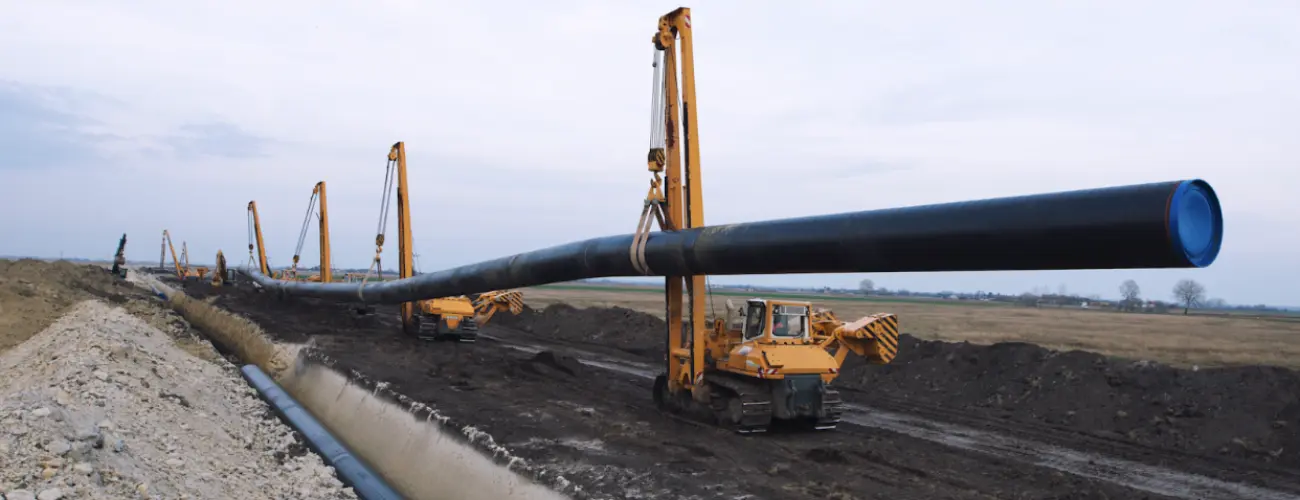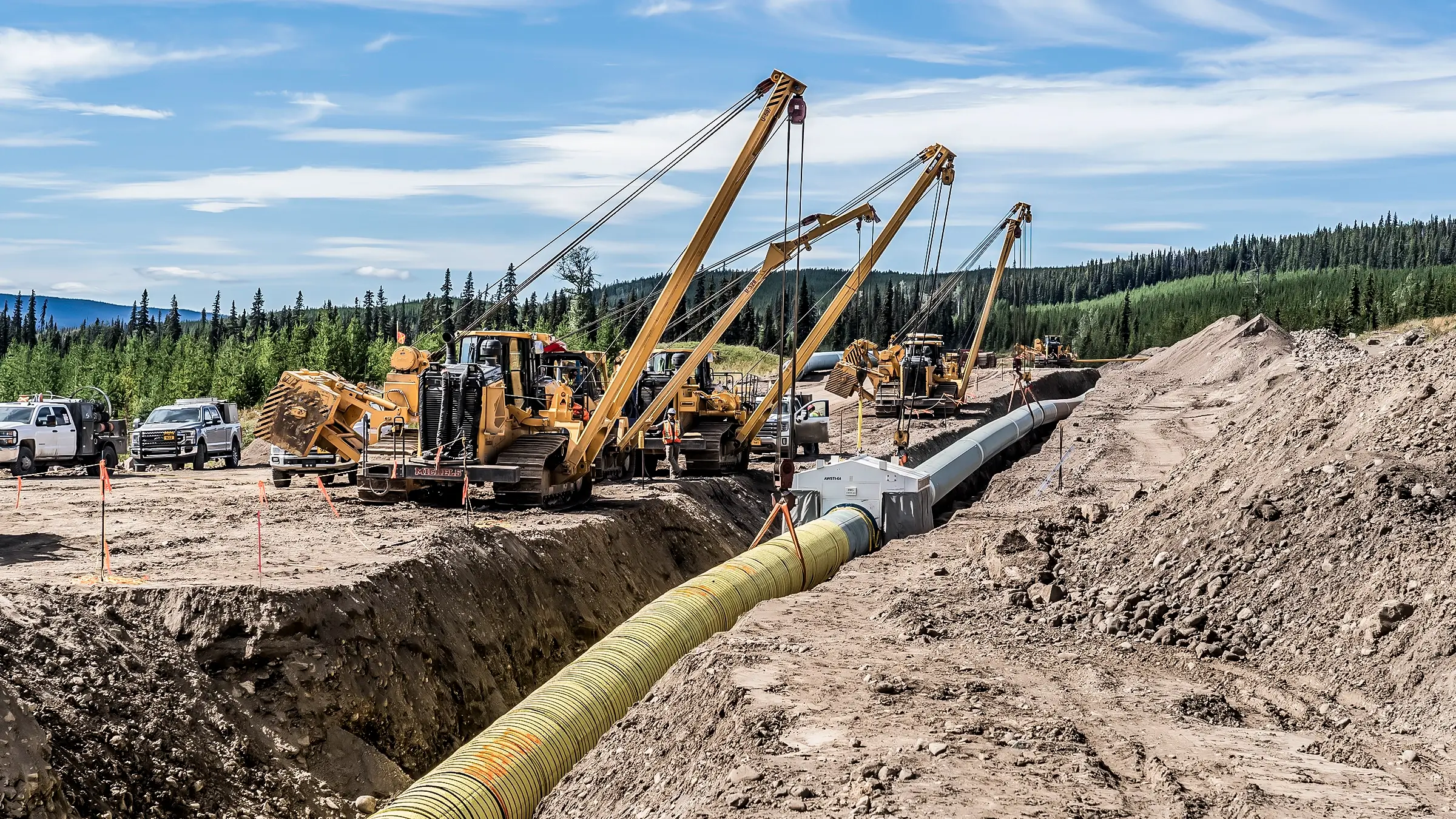The Risks of Self-Installing Without Help From Creek Pipe Company
What You Should Know Regarding Pipe Trenching Services: An In-depth Overview of Available Options
Pipe trenching services are important for the installation and maintenance of below ground utilities. They entail various approaches customized to particular demands and environments. Recognizing these techniques is key for efficient task implementation. Each alternative presents its very own set of benefits and obstacles. As the need for efficient utility monitoring rises, understanding what to take into account when selecting a trenching solution comes to be vital. What aspects should one prioritize to ensure success?
Recognizing Pipe Trenching: What It Is and Why It Issues
Although often forgotten, pipe trenching is an important process in different building and construction and utility tasks. This strategy involves digging deep into narrow trenches to facilitate the installment of pipes for water, gas, sewage, and telecommunications. The importance of pipe trenching depends on its function in making certain that these necessary systems are effectively integrated into framework, enabling the risk-free and reliable delivery of needed services.Proper trenching is crucial for keeping the honesty of pipes and reducing dangers related to dirt erosion and collapses. It additionally enables effective examinations and upkeep of underground utilities. In addition, comprehending the neighborhood policies and ecological factors to consider is essential, as improper trenching can cause pricey delays and legal problems. Eventually, pipeline trenching works as the foundational action that sustains various building undertakings, making it a significant element of modern-day framework advancement.
Common Trenching Approaches for Below Ground Utilities
In the domain name of below ground energies, various trenching methods play an important function in installation and maintenance - Creek Pipe contact. The open-cut trenching technique, directional uninteresting strategy, and hydro excavation procedure each offer unique benefits depending upon the details project requirements. Understanding these methods is crucial for reliable and efficient utility monitoring
Open-Cut Trenching Method
Open-cut trenching is a widely made use of technique for installing underground utilities, especially when the depth and width of the trench enable efficient accessibility. This method includes excavating a trench along the recommended path of the energy, supplying direct presence and access for installation. It is specifically advantageous for jobs that call for comprehensive excavation, as it promotes fast installment and assessment. Nonetheless, it likewise demands careful planning to lessen disturbance to the surrounding area, including website traffic and existing structures. Open-cut trenching is most effective in open rooms where the soil problems agree with, but it may be restricted in urban atmospheres as a result of the visibility of existing utilities and various other below ground obstacles.
Directional Boring Technique

Hydro Excavation Process
How does hydro excavation attract attention among typical trenching approaches for underground utilities? Hydro excavation makes use of high-pressure water and vacuum modern technology to securely eliminate dirt, enabling precise digging around delicate below ground utilities. This technique lessens the danger of harmful existing framework compared to typical mechanical excavation. By utilizing water to loosen up the dirt, hydro excavation gives a less invasive method, minimizing the capacity for soil compaction and making certain a cleaner worksite. In addition, the process boosts exposure during excavation, boosting overall precision and efficiency. Hydro excavation is especially beneficial in city locations where energy lines are largely packed, making it a preferred choice for professionals concentrated on safety and accuracy in below ground jobs.
Advantages of Trenching Services
While numerous approaches exist for installing underground utilities, trenching services use distinctive benefits that make them a favored option for many tasks. One significant benefit is the cost-effectiveness of trenching, as it commonly calls for less specialized tools contrasted to choices like hydro excavation. This often causes reduced labor and operational costs. In addition, trenching can accommodate a variety of energy types, consisting of water, sewer, and gas lines, offering adaptability for contractors.Moreover, trenching enables reliable accessibility to several lines in a solitary excavation, decreasing disruption to the surrounding area. The procedure additionally enables specific installation and fixing, which is crucial for sticking to regulative requirements and making sure long-lasting integrity. Inevitably, trenching can be performed reasonably promptly, minimizing job timelines and permitting faster solution restoration. These advantages collectively make trenching services a useful choice for lots of underground energy jobs.
Disadvantages and Obstacles of Trenching
Despite the many advantages of trenching services, there are remarkable negative aspects and difficulties that need to be thought about. One significant obstacle is the capacity for soil instability, which can bring about collapses, presenting dangers to employees and devices. Additionally, trenching can interfere with existing utility lines, necessitating careful planning and control to prevent solution disruptions. The process can likewise be taxing, especially in urban areas where room is limited and accessibility is limited. Trenching may call for considerable licenses and regulatory compliance, including complexity and prospective delays to jobs. Ecological issues, such as dirt erosion and damage to regional ecological communities, can emerge from incorrect trenching practices. The prices associated with trenching, including labor and tools, can rise if unanticipated problems occur throughout the task, making it necessary for stakeholders to weigh these obstacles against the advantages when thinking about trenching solutions.
Trick Aspects to Take Into Consideration When Choosing a Trenching Solution
Choosing the right trenching solution can considerably influence the success of a task. Numerous vital factors must be analyzed to ensure a suitable choice. First, the business's experience and knowledge in trenching procedures are crucial; a reputable service with a strong performance history is normally more dependable. Next off, evaluating the equipment made use of is fundamental, as contemporary machinery can improve efficiency and precision. In addition, it is significant to think about the series of solutions used, including excavation depth and soil kind handling, to verify they fulfill specific task requirements.Another aspect to testimonial is the business's online reputation; consumer testimonials and endorsements can give insights right into previous performance. Getting detailed quotes that describe expenses and timelines will certainly aid in budget plan monitoring. Verifying compliance with local guidelines and industry requirements is essential for preventing potential lawful problems. By showing on these factors, review customers can make an informed decision when picking a trenching service.
Safety Procedures in Pipe Trenching
In pipeline trenching, security measures are crucial to guaranteeing employee security and website honesty. Key elements include the use of individual protective devices, comprehensive excavation website inspections, and well-defined emergency situation reaction protocols. Applying these steps greatly decreases threats associated with trenching operations.
Individual Safety Devices
Safety and security in pipeline trenching heavily depends on the correct use personal protective devices (PPE) Workers must put on construction hats to shield against falling items, along with high-visibility vests to improve their visibility on-site. Steel-toed boots are important for foot defense versus heavy tools and products. Additionally, gloves are necessary for hand safety and security, specifically when handling harsh or sharp things. Respirators might likewise be essential in atmospheres with dirt or dangerous fumes. Eye protection, such as security goggles, ought to be worn to protect against debris. Hearing security is important in loud work settings. By adhering to PPE standards, employees can greatly decrease the threat of injury and assure a much safer trenching operation.
Excavation Site Inspection
Effectively examining the excavation site is a basic step in guaranteeing a secure pipe trenching operation. This process includes examining the site for prospective risks such as below ground utilities, unsteady dirt problems, and neighboring structures. A detailed analysis enables for the identification of dangers that can endanger worker safety. Additionally, validating the soil kind and dampness levels can help identify proper shoring approaches to avoid trench collapses. It is vital to ensure that the website is clear of debris which proper signs is displayed to signal personnel of ongoing operations. Routine assessments throughout the job can additionally help spot any type of modifications in website problems, allowing prompt adjustments to precaution and work protocols.

Emergency Action Protocols
Emergency feedback methods are important in mitigating dangers related to pipe trenching procedures. These article source procedures assure that all personnel are prepared to act quickly and efficiently in emergency situations. Crucial element consist of routine security drills, clear interaction networks, and designated emergency situation leaves. Additionally, first-aid packages and emergency contact numbers must be readily obtainable on-site. Trenching procedures need to additionally consist of treatments for handling harmful scenarios, such as collapses or energy strikes. Educating workers on recognizing prospective hazards and recognizing their functions throughout an emergency situation is essential. Maintaining an updated website safety plan can greatly boost feedback effectiveness. Generally, reliable emergency situation preparedness promotes a more secure working environment and minimizes the effect of unexpected cases.
Expense Considerations for Trenching Providers
Recognizing the economic implications of trenching services is vital for job preparation and budgeting. The costs connected with trenching can differ extensively based upon several variables, consisting of project size, soil kind, and depth of the trench. Labor expenses typically stand for a significant section of the complete cost, as proficient operators are necessary for reliable implementation. Furthermore, equipment service charges can contribute to the general budget, specifically for specialized machinery.Site ease of access is one more important aspect; tough surface might demand added sources, increasing expenses. Permitting and regulative conformity can likewise include to costs, especially in metropolitan areas where laws are stringent.Lastly, unforeseen problems, such as coming across existing energies, can lead to unforeseen expenses and delays. Therefore, getting comprehensive quotes from credible trenching service suppliers is vital for exact budgeting and making sure successful task conclusion.
Regularly Asked Questions
Exactly how Lengthy Does a Normal Pipe Trenching Job Take?
The duration of a regular everun loader for sale pipe trenching job differs significantly based upon elements such as depth, soil conditions, and task complexity. Usually, it can take anywhere from a couple of days to several weeks to finish.
What Equipment Is Generally Made Use Of in Pipe Trenching?

Are There Environmental Regulations for Trenching Activities?
Ecological laws for trenching activities often call for compliance with neighborhood, state, and federal guidelines. These policies aim to decrease eco-friendly disruption, protect water resources, and guarantee correct waste administration during excavation and installment procedures.
Can Trenching Services Be Combined With Various Other Building Jobs?
Trenching solutions can undoubtedly be integrated with numerous construction projects. By coordinating initiatives, effectiveness can be attained, minimizing interruptions while ensuring that all needed facilities job is finished in a timely and cost-efficient manner.
What Are Usual Soil Keys In Come Across in Trenching?
Common soil kinds encountered in trenching consist of clay, sand, silt, and loam. Each type provides one-of-a-kind difficulties, influencing excavation methods and security, requiring cautious planning to ensure safe and effective trenching procedures.